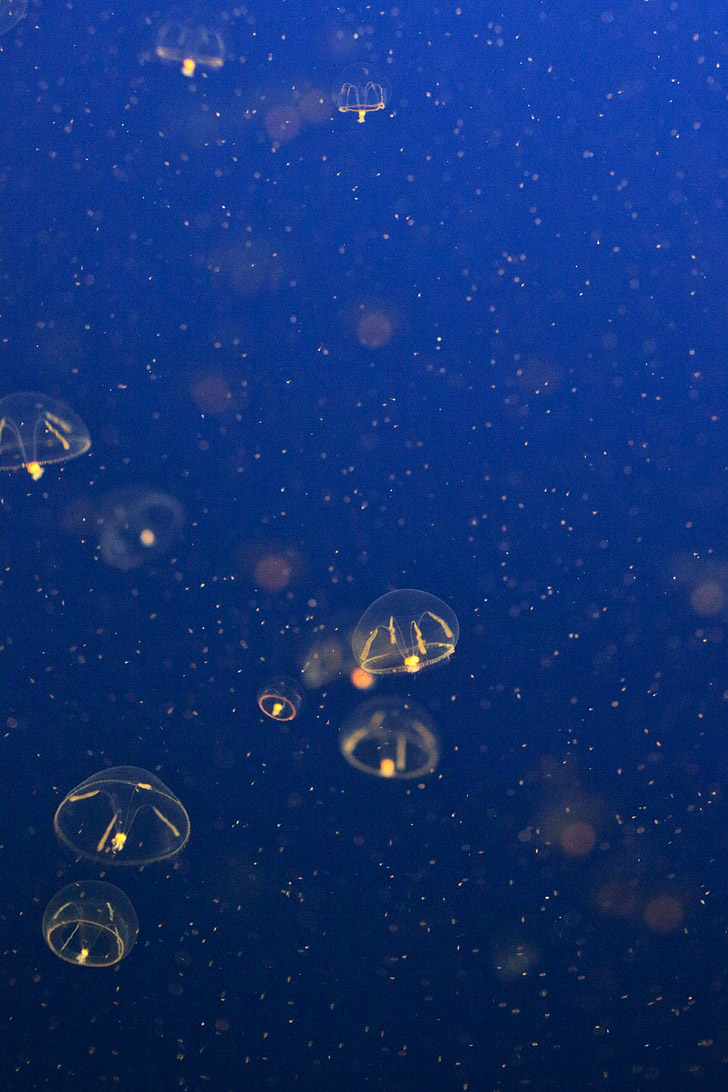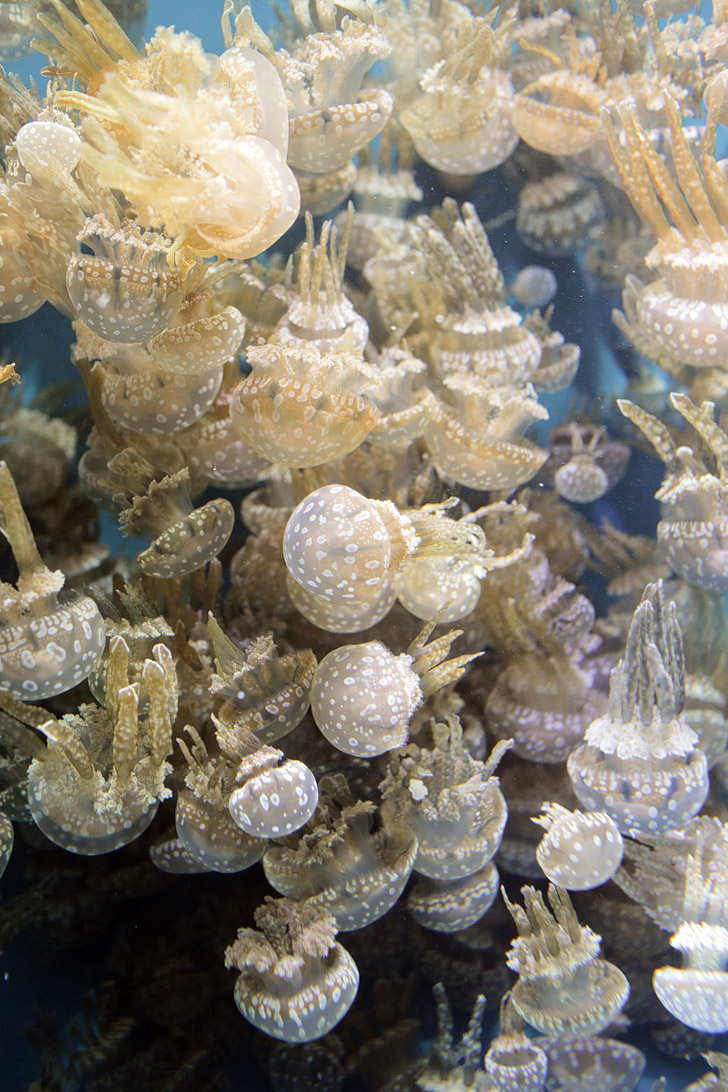The jellyfish exhibits are always my favorite parts of an aquarium to explore. They’re amazing creatures and best of all so photogenic. On our visit to the Monterey Bay Aquarium, they had a special “Jellies Experience” which had so many jellyfish we had never seen in other aquariums. Lucky me! :) Jacob had trouble peeling me away from these guys.


13 REMARKABLE SPECIES OF JELLYFISH AT THE MONTEREY AQUARIUM
1. South American Sea Nettle (chrysaora plocamia)



2. Umbrella Jellyfish (eutonina indicans)


3. Flame Jellyfish (rhopilema esculentum)



4. Moon Jellyfish (aurelia labiata)


5. Upside Down Jellyfish (cassiopea)


6. Black Sea Nettle (chrysaora achlyos)


7. White Spotted Jellyfish (mastigias papua)



8. Pacific Sea Nettle (chrysaora fuscescens)

9. Crown Jellyfish (cephea cephea)

10. Crystal Jellyfish (aequorea sp)


11. Indonesian Sea Nettle (chrysaora chinensis)



12. Lions Mane Jellyfish (cyanea capillata)



13. Warty Comb Jelly (mnemiopsis leidyi)


All photos taken with a Canon 5D Mark III and 35 mm f/1.4 L lens.
There are more species of jellyfish, but these were the ones that came out best in photos. The last one is my all time favorite type of jellyfish. I first saw it at the Georgia Aquarium and was fascinated by the the self illuminating neon colors along the side. It was first discovered in 2009, and I really can’t believe how we’re still discovering new species today.
MONTEREY FAMILY PACKAGE GIVEAWAY
I’m so excited that See Monterey is giving away these tickets so you can experience more of what Monterey has to offer. The package includes:
- 4 tickets to the Monterey Bay Aquarium
- 4 tickets to the MY Museum
To enter the giveaway, visit See Monterey here. If you need more info on the area, you can download a free visitor’s guide here (link is at the bottom).
Monterey Bay Aquarium
886 Cannery Row
Monterey CA 93940
831.648.4800



